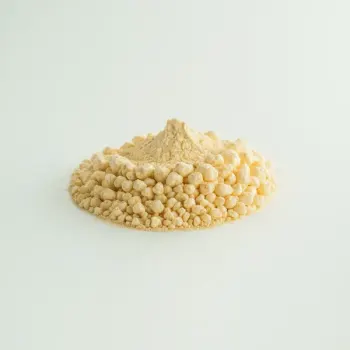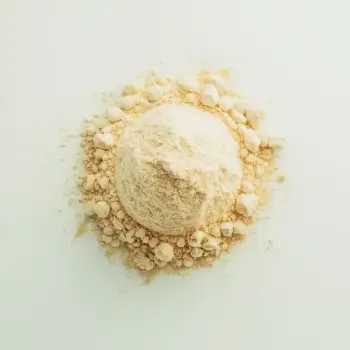Cornstarch and Arrowroot Powder are versatile thickening agents used in cooking and baking, each with distinct properties suitable for different culinary applications, such as sauces, pie fillings, and frying.

Cornstarch, derived from corn kernels, is a fine white powder that's commonly used as a thickening agent in cooking and baking. It's known for its neutral flavor and high thickening power.

Arrowroot powder is a starch obtained from the rhizomes of several tropical plants. It is favored for its gluten-free and grain-free properties, and it creates a clear, glossy finish when used as a thickener.
Cornstarch and Arrowroot Powder differ in source, texture, and reaction to different cooking conditions. Cornstarch is derived from corn and can create a more opaque, matte finish, while Arrowroot Powder, sourced from tropical plants, offers a shiny, clear finish. Additionally, Arrowroot Powder is more stable under acidic conditions and freezes well, unlike Cornstarch.

Your ultimate Recipe Box, Meal Planner, and Cooking Class all in one
Cornstarch is excellent for thickening gravies, stews, and sauces. It provides a thick, velvety texture without altering the taste. Use a slurry of cornstarch mixed with cold water to prevent clumps. Arrowroot Powder is perfect for glazes, fruit pie fillings, and sauces that require a glossy appearance. It thickens at a lower temperature, so it's important to add it towards the end of cooking.
In baking, cornstarch is used to soften the proteins in flour, resulting in a tender and fine-textured cake. It's also part of cornstarch-based confectioners' sugar, which is used in frostings and decorations. Arrowroot Powder is an excellent choice for gluten-free and grain-free baking. It can be used to replace cornstarch in recipes for lighter and airier textures in cookies and cakes.
Cornstarch is often used in frying batters to achieve a crispy and crunchy exterior on foods like chicken, fish, and vegetables. It can withstand higher temperatures than Arrowroot Powder. Arrowroot Powder can be used as a coating for frying to provide a lighter, crisper crust, but it's less tolerant of very high heat compared to Cornstarch.
Both Cornstarch and Arrowroot Powder are largely carbohydrate, with minimal amounts of protein or fat.
| Nutrient | Cornstarch ( per 100 grams ) | Arrowroot Powder ( per 100 grams ) |
|---|---|---|
| Fat | 0.1g | 0.1g |
| Fiber | 0.9g | 3.4g |
| Sodium | 9mg | 26mg |
| Protein | 0.3g | 0.3g |
| Calories | 381 | 357 |
| Carbohydrates | 91g | 88g |
Yes, you can use Cornstarch instead of Arrowroot Powder in pie fillings, but the filling may not be as glossy and clear.
Arrowroot Powder is gluten-free and grain-free, making it a suitable alternative for those with certain allergies or sensitivities.
Cornstarch is flavor-neutral, which means it doesn't impart any taste to the dish, allowing the primary flavors to shine through.
Cornstarch can become spongy when frozen, while Arrowroot Powder maintains its consistency, making it a better choice for dishes that will be frozen.
Arrowroot Powder is less tolerant to high temperatures and should be added towards the end of cooking to prevent it from breaking down.